Basketball
What Are The Basic Rules of Basketball?

What Are The Basic Rules of Basketball?
Basketball, a sport renowned for its fast-paced action and electrifying athleticism, captivates millions of fans worldwide with its dynamic gameplay. Whether you’re a player stepping onto the court, a coach strategizing from the sidelines, a referee ensuring fair play, or a devoted fan cheering from the stands, comprehending the fundamental rules of basketball is paramount to fully engage in the game.
In this guide, we delve into the basic rules of basketball, providing insights into team composition, gameplay objectives, court layout, scoring methods, and more. By grasping these essential rules, you’ll gain a deeper appreciation for the intricacies of basketball and enhance your enjoyment of this exhilarating sport. So, let’s embark on a journey through the core principles that define the game of basketball.
Team Composition in Basketball: Understanding Player Roles and Positions
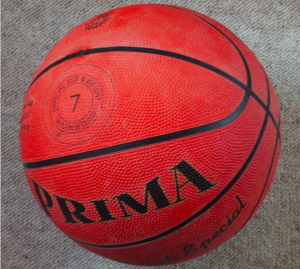
In basketball, team composition plays a crucial role in determining the dynamics of the game. Each team consists of five players on the court at any given time, with specific positions and roles to fulfill. Understanding these player positions and their responsibilities is essential for effective teamwork and strategic gameplay. Here’s a breakdown of the typical team composition in basketball:
- Point Guard (PG): The point guard is often referred to as the floor general or playmaker. This player is responsible for directing the team’s offense, setting up plays, and distributing the ball to teammates. Point guards are known for their ball-handling skills, court vision, and decision-making abilities.
- Shooting Guard (SG): The shooting guard is primarily responsible for scoring points through shooting from long range or driving to the basket. This player is often one of the team’s best shooters and is expected to excel in shooting accuracy and perimeter defense.
- Small Forward (SF): The small forward is a versatile player who can contribute both offensively and defensively. This position requires athleticism, as small forwards must be capable of scoring, rebounding, and defending against opposing forwards.
- Power Forward (PF): The power forward is typically one of the team’s tallest players and specializes in rebounding and scoring in the paint. This player must possess strength, agility, and a knack for scoring close to the basket while also being able to defend against opponents in the post.
- Center (C): The center is usually the tallest player on the team and serves as the primary defensive anchor and rim protector. Centers are responsible for rebounding, shot-blocking, and scoring near the basket. They play a pivotal role in both offense and defense, often dominating the paint area.
While these are the traditional positions in basketball, modern gameplay often involves players who can fulfill multiple roles and positions interchangeably. Additionally, teams may employ different strategies and formations based on their strengths, opponents, and game situations. Understanding the team composition and player roles is essential for effective communication, coordination, and execution on the basketball court.
Objective of Basketball: Scoring Points and Teamwork
Basketball is a dynamic and fast-paced sport with a clear objective: to score more points than the opposing team. At its core, the game revolves around shooting the basketball into the opponent’s hoop while preventing them from doing the same to your team’s hoop. However, the objective of basketball extends beyond mere scoring and encompasses several key aspects:
- Scoring Points: The primary objective of basketball is to score points by shooting the ball through the opponent’s hoop. Each successful field goal, whether it’s a two-point field goal or a three-point field goal (if shot from beyond the three-point line), contributes to the team’s total score. Additionally, free throws, awarded for certain fouls, offer another opportunity to score points.
- Teamwork: Basketball is a team sport that emphasizes cooperation, coordination, and communication among players. While individual skills are important, success in basketball often hinges on effective teamwork. Players must work together to create scoring opportunities, move the ball efficiently, and support each other on offense and defense.
- Strategy and Tactics: Beyond simply scoring points, basketball involves strategic decision-making and tactical execution. Coaches and players devise game plans to exploit opponents’ weaknesses, utilize their team’s strengths, and adapt to changing circumstances during the game. Strategic elements such as player positioning, offensive plays, defensive schemes, and player substitutions all contribute to achieving the objective of winning the game.
- Defensive Stops: In addition to scoring points, preventing the opposing team from scoring is essential in basketball. Effective defense involves disrupting the opponent’s offense, contesting shots, forcing turnovers, and securing defensive rebounds. By limiting the opponent’s scoring opportunities, teams can increase their chances of success.
- Game Management: Managing the game effectively involves various aspects, including clock management, fouls, timeouts, and substitutions. Teams must maintain composure under pressure, make timely adjustments, and capitalize on momentum shifts to control the flow of the game and ultimately achieve the objective of winning.
Overall, the objective of basketball encompasses scoring points, teamwork, strategy, defense, and game management. By excelling in these areas, teams aim to outperform their opponents and emerge victorious in the game.
Duration: Timing the Action
In basketball, the duration of a game is divided into specific periods, each with its own rules and regulations. Understanding the timing and structure of the game is crucial for players, coaches, and fans alike. Here’s an overview of the duration aspects in basketball:
- Game Length: A standard basketball game consists of four quarters, each lasting a specified amount of time. In professional basketball leagues such as the NBA (National Basketball Association), each quarter typically lasts 12 minutes. However, in other leagues or levels of play, such as college basketball or youth leagues, the duration of quarters may vary.
- Halftime: After the first two quarters, there is a halftime break. Halftime typically lasts around 15 minutes, providing players and coaches with an opportunity to rest, regroup, and make adjustments for the remainder of the game.
- Overtime: If the score is tied at the end of regulation (four quarters), additional periods called overtime may be played to determine the winner. Overtime periods are typically shorter than regular quarters, often lasting five minutes each. Overtime continues until one team emerges as the winner, regardless of the number of overtime periods played.
- Game Clock: During each quarter, the game clock counts down from the designated time (e.g., 12 minutes). The clock stops in various situations, such as timeouts, fouls, free throws, and certain game stoppages. However, it continues to run during live gameplay, except for the final two minutes of the fourth quarter in some leagues, where it stops during every dead ball situation.
- Shot Clock: In addition to the game clock, basketball also employs a shot clock, which limits the amount of time a team has to attempt a field goal. The shot clock varies depending on the level of play and league rules but is typically around 24 seconds in professional basketball. If a team fails to attempt a shot before the shot clock expires, they lose possession of the ball, resulting in a turnover.
Understanding the duration aspects of basketball is essential for players and teams to manage their time effectively, make strategic decisions, and maintain momentum throughout the game. By adhering to the timing rules and maximizing their opportunities within the allocated timeframes, teams can enhance their chances of success on the court.
Court Layout: The Arena of Action
The layout of a basketball court is fundamental to the game, providing the framework within which players compete, execute strategies, and showcase their skills. Understanding the various components and dimensions of the court is essential for players, coaches, and spectators alike. Here’s a detailed overview of the layout of a standard basketball court:
- Dimensions: A regulation basketball court measures 94 feet in length and 50 feet in width. The court is divided symmetrically into two halves by a midcourt line, with each half serving as one team’s offensive and defensive territory.
- Basket and Backboard: At each end of the court, elevated above the floor, is a basketball hoop consisting of a metal rim and a backboard. The rim is 10 feet above the ground and is mounted to the backboard, which is typically made of transparent material such as acrylic or tempered glass.
- Three-Point Line: Arcing outward from the basket on both ends of the court is the three-point line, which delineates the boundary beyond which successful field goals are awarded three points instead of two. The distance of the three-point line varies between leagues and levels of play, with the NBA three-point line situated at 23 feet 9 inches from the center of the basket.
- Key or Paint Area: In front of each basket is a rectangular area known as the key, free-throw lane, or paint. The key is bounded by the free-throw line, baseline, and extended free-throw line. It is a critical area for various aspects of gameplay, including free throws, post play, and defensive positioning.
- Free-Throw Line: Located 15 feet from the backboard and parallel to the baseline, the free-throw line is where players attempt free throws following certain types of fouls. Each free throw is worth one point and is attempted without opposition from defenders.
- Sidelines and Baselines: The sidelines run the length of the court and mark the outer boundaries. The baselines, perpendicular to the sidelines, extend behind each basket and define the back boundary of the court.
- Half-Court Line: Running across the center of the court, the half-court line divides the court into two equal halves. It is a reference point for various situations, including initiating play after a basket or during jump ball situations.
Understanding the layout of the basketball court enables players to navigate the playing surface effectively, execute plays, and adhere to the rules of the game. Coaches use the dimensions and features of the court to develop strategies, while spectators follow the action and appreciate the athleticism and skill displayed by the players on the court.
Start of Play: Tip-Off and Possession
The start of a basketball game, known as the tip-off, sets the stage for the action-packed contest that follows. Understanding the procedures for the tip-off and how possession is determined is crucial for players, officials, and fans alike. Here’s a detailed overview of how the start of play unfolds in basketball:
- Tip-Off: The game begins with a tip-off at center court, where the referee tosses the basketball into the air between two opposing players. Typically, the tallest players from each team participate in the tip-off, aiming to gain possession of the ball for their respective teams.
- Jump Ball: As the basketball is tossed into the air, the two players vying for possession leap into the air in an attempt to tip the ball to their teammates. The other players on the court must remain outside the center circle until the ball is tapped by one of the jumpers or until it is legally touched after hitting the floor.
- Possession Arrow: In basketball, possession alternates between teams throughout the game. To determine which team gains possession after the opening tip-off and at the start of subsequent periods, a possession arrow is used. The possession arrow points towards the team that will receive the next alternating possession. At the beginning of the game, possession is awarded to the team that loses the opening tip-off. If the possession arrow changes during the game due to jump ball situations, it indicates which team will receive possession for the next alternating possession scenario.
- Alternating Possession: Following the tip-off and subsequent jump ball situations, possession of the basketball alternates between the teams. When a jump ball occurs during the game, the possession arrow determines which team will inbound the ball or gain possession at the spot nearest to where the jump ball occurred.
- Inbounding: After the opening tip-off, possession is established, and the game officially begins. When the ball goes out of bounds during play, the opposing team is awarded possession for an inbound pass from the sidelines or baselines, depending on where the ball went out of bounds.
By understanding the procedures for the tip-off and how possession is determined in basketball, players and officials can ensure a fair and orderly start to the game. The tip-off not only initiates the action on the court but also symbolizes the competitive spirit and camaraderie inherent in the sport of basketball.
Scoring in Basketball: Putting Points on the Board
Scoring is the essence of basketball, with teams aiming to outscore their opponents by shooting the ball through the opposing team’s hoop. Understanding the various ways to score points is fundamental to the game. Here’s a breakdown of the scoring system in basketball:
- Field Goals: Field goals are the primary method of scoring in basketball and can be worth two or three points, depending on where the shot is taken from:
- Two-Point Field Goal: A shot made from anywhere inside the three-point line results in a two-point field goal.
- Three-Point Field Goal: A shot made from beyond the three-point line earns three points.
- Free Throws: Free throws provide players with an opportunity to score uncontested points from the free-throw line after a foul is committed by the opposing team. Each successful free throw is worth one point.
- One-Point Free Throw: A player is awarded one free throw attempt for each foul committed by the opposing team. If the player makes the free throw, their team is awarded one point.
- Scoring on Fouls: In addition to free throws, players may also score points directly as a result of a shooting foul committed by the opposing team. If a player is fouled in the act of shooting and the shot is successful, they are awarded the basket and an additional free throw attempt.
- And-One: When a player scores a field goal despite being fouled during the attempt, they are awarded the points for the basket, and an additional free throw attempt is granted. If the player makes the free throw, it results in a traditional three-point play.
- Scoring from Offensive Interference: Points may also be awarded to the opposing team if a defensive player commits basket interference or goaltending, which involves interfering with the ball while it is on its way to the basket or while it is above the rim.
- Game Situations: In certain game situations, such as overtime periods or during the final moments of a game when trailing, teams may attempt three-point shots or quick scoring opportunities to either extend the game or close the gap on the scoreboard.
Understanding the scoring system in basketball allows players, coaches, and fans to appreciate the strategic elements of the game and the importance of efficient offense and disciplined defense in achieving victory. Whether it’s a well-executed jump shot, a clutch free throw, or a timely offensive rebound, each point scored contributes to the excitement and intensity of basketball competition.
Ball In and Out of Play: Understanding Key Concepts
In basketball, the ball is in play for the majority of the game, with only a few exceptions. Knowing when the ball is considered in play or out of play is crucial for players and officials alike. Here’s a detailed look at the concept of the ball being in and out of play:
- Ball In Play:
- The ball is considered in play during regular game action, including when it is being dribbled, passed, or shot by players on the court.
- Inbounds Pass: After a made basket, a successful free throw, or a violation that results in a throw-in, the ball is put into play by an inbound pass from out of bounds.
- Ball Out of Play:
- Out of Bounds: The ball is considered out of play when it crosses over the boundaries of the court or touches any object outside the designated playing area. This includes the sidelines and baselines.
- Dead Ball: The ball is also considered out of play during certain game stoppages, such as timeouts, fouls, violations, and out-of-bounds situations. During these instances, play is temporarily suspended, and the ball is not actively in play.
- Throw-Ins:
- After the ball goes out of bounds, it is put back into play by a throw-in. A player from the team that did not touch the ball last before it went out of bounds is responsible for the throw-in.
- The player executing the throw-in must remain stationary and may not step over the boundary line until the ball is released. Failure to comply results in a turnover, with possession awarded to the opposing team.
- Resuming Play:
- Once the ball is successfully inbounded or returned to play following a stoppage, the game resumes, and players are free to continue their actions on the court.
- Play typically resumes with the offensive team attempting to advance the ball toward their basket and score, while the defensive team aims to prevent scoring opportunities and regain possession.
Understanding when the ball is in play or out of play is essential for players to make informed decisions during gameplay. Additionally, officials must accurately enforce the rules regarding ball possession and out-of-bounds situations to maintain the integrity and fairness of the game. By grasping these fundamental concepts, players and fans alike can better appreciate the flow and dynamics of basketball competition.
Fouls and Violations: Maintaining Fair Play
In basketball, fouls and violations play a crucial role in ensuring fair play and sportsmanship throughout the game. Understanding the difference between fouls and violations, as well as their implications, is essential for both players and officials. Here’s a detailed overview of fouls and violations in basketball:
- Fouls:
- Fouls occur when a player makes illegal physical contact with an opponent that hinders their ability to perform normal basketball movements.
- Common types of fouls include:
- Personal Foul: Any illegal physical contact between players, such as pushing, holding, or charging.
- Shooting Foul: A foul committed against a player in the act of shooting, resulting in free throw opportunities.
- Technical Foul: Non-contact fouls, often related to unsportsmanlike conduct, such as arguing with officials, excessive celebration, or illegal substitutions.
- Flagrant Foul: Serious fouls involving excessive or unnecessary contact, often resulting in ejection from the game.
- When a player commits a foul, the opposing team is typically awarded free throws or possession of the ball, depending on the circumstances and the number of team fouls accumulated.
- Violations:
- Violations are infractions of the rules that do not involve physical contact but still result in a turnover of possession.
- Common violations include:
- Traveling: Moving one’s pivot foot illegally without dribbling the ball, resulting in a turnover.
- Double Dribble: Dribbling the ball with both hands simultaneously or resuming dribbling after stopping without passing or shooting.
- Three-Second Violation: A player remaining in the key area (the painted area near the basket) for more than three seconds while their team is in possession of the ball.
- Out-of-Bounds Violation: The ball or a player’s body touches the boundary lines or goes out of bounds, resulting in a change of possession.
- Unlike fouls, violations do not result in free throws for the opposing team but instead lead to a turnover, with possession awarded to the other team.
- Enforcement and Penalties:
- Officials are responsible for identifying and penalizing fouls and violations during gameplay.
- Depending on the severity and type of infraction, penalties may include free throws, possession changes, or ejection from the game for players or coaches.
- Consistent enforcement of fouls and violations helps maintain the integrity and fairness of the game while promoting player safety and sportsmanship.
By understanding the distinctions between fouls and violations and their respective consequences, players can strive to compete within the boundaries of the rules while minimizing errors and infractions. Additionally, officials play a crucial role in enforcing these rules impartially to ensure a level playing field for all participants.
Substitutions: Managing Player Rotation and Strategy
In basketball, substitutions play a crucial role in managing player fatigue, adapting to game situations, and implementing strategic changes. Understanding the rules and strategies surrounding substitutions is essential for coaches and players alike. Let’s explore the intricacies of substitutions in basketball:
- Types of Substitutions:
- Direct Substitution: A player enters the game to replace another player at the same position, maintaining the team’s formation and strategy.
- Mass Substitution: Several players enter or leave the game simultaneously, often used to provide rest for multiple players or make significant tactical adjustments.
- Timeout Substitution: Coaches can make substitutions during timeouts, allowing them to assess the game situation and make strategic changes without using regular game play stoppages.
- Substitution Rules:
- Dead Ball Situations: Substitutions are typically allowed during dead ball situations, such as timeouts, fouls, or when the ball is out of bounds. This ensures smooth transitions without disrupting the flow of the game.
- Limitations: In most basketball leagues, including the NBA and FIBA, teams are limited in the number of substitutions they can make during a game. Coaches must strategically manage their substitutions to optimize player performance and minimize fatigue.
- Illegal Substitutions: Making substitutions outside of designated stoppages or exceeding the allowable number of substitutions results in penalties, such as technical fouls or loss of possession.
- Strategy and Timing:
- Matchups: Coaches often use substitutions to exploit favorable matchups or neutralize opponents’ strengths. For example, bringing in a defensive specialist to guard an opponent’s top scorer.
- Rest and Fatigue Management: Substitutions allow coaches to rotate players effectively, ensuring that key players receive adequate rest while maintaining a high level of performance throughout the game.
- Game Flow: Substitutions can also impact the pace and momentum of the game. Well-timed substitutions can inject energy into the team, rally momentum shifts, or disrupt opponents’ strategies.
- Player Roles and Specializations:
- Starter vs. Bench Players: Coaches must balance the contributions of starting players, who typically provide scoring and leadership, with those of bench players, who may specialize in defense, rebounding, or situational play.
- Sixth Man: Some players excel in the role of the “sixth man,” coming off the bench to provide an immediate scoring boost or defensive intensity. Coaches strategically deploy these players to maximize their impact on the game.
- Injury Considerations:
- In cases of player injury, substitutions allow coaches to replace injured players and maintain continuity in team strategy. Prompt and strategic substitutions can mitigate the impact of injuries on the team’s performance.
By understanding the nuances of substitutions and employing strategic rotations, coaches can optimize player performance, adapt to game situations, and maximize their team’s chances of success on the basketball court. Effective substitution management is not only a tactical skill but also a crucial element of coaching mastery in the dynamic sport of basketball.
Winning the Game: Achieving Victory in Basketball
In basketball, the ultimate goal for teams is to emerge victorious by outscoring their opponents through a combination of skillful play, strategic execution, and teamwork. Understanding the rules and strategies for winning the game is essential for players, coaches, and fans alike. Let’s delve into the key aspects of winning a basketball game:
- Scoring More Points:
- The primary objective in basketball is to score more points than the opposing team by shooting the ball into the opponent’s basket.
- Points can be scored through various methods, including field goals (either two-point or three-point shots), free throws, and occasional bonus points for specific game situations.
- Maintaining a Lead:
- Teams strive to build and maintain a lead over their opponents throughout the game. A lead provides a buffer against the opponent’s scoring efforts and allows teams to control the pace and flow of the game.
- Effective defense, accurate shooting, and strategic decision-making contribute to building and preserving a lead.
- Game Management:
- As the game progresses, teams must manage the game clock, possessions, and momentum to their advantage.
- Strategic timeouts, substitutions, and offensive/defensive adjustments help teams maintain control and adapt to changing game situations.
- Closing Out the Game:
- In the closing minutes of a game, teams aim to secure their lead and prevent their opponents from staging a comeback.
- This often involves executing high-percentage plays, managing the shot clock, and making smart decisions with the ball to minimize turnovers and extend possessions.
- Free Throws and Clock Management:
- In tight games, free throws become crucial for maintaining or extending a lead. Teams must capitalize on free throw opportunities and convert them into points while managing the game clock effectively.
- Foul situations also influence game strategy, as teams may intentionally foul opponents to stop the clock and regain possession, particularly when trailing late in the game.
- Defensive Stops:
- Strong defensive play is essential for securing victories in basketball. Teams must focus on limiting their opponents’ scoring opportunities, forcing turnovers, and securing defensive rebounds to end possessions.
- Timely defensive stops and key steals can swing momentum in favor of the defending team and thwart their opponents’ scoring efforts.
- Executing Game Plans:
- Coaches play a pivotal role in developing game plans and strategies tailored to their team’s strengths and the opponent’s weaknesses.
- Effective communication, player discipline, and execution of game plans are essential for achieving success on the court and securing victories.
Ultimately, winning a basketball game requires a combination of skill, strategy, teamwork, and composure under pressure. By mastering these elements and executing them effectively, teams can achieve their goal of emerging victorious and celebrating their success on the basketball court.
Conclusion
In conclusion, mastering the fundamental rules of basketball is essential for players, coaches, and fans alike. By understanding the basics of team composition, objectives, court layout, and gameplay, individuals can fully engage with the sport and appreciate its fast-paced action and strategic intricacies. Whether on the court or in the stands, basketball offers endless excitement and entertainment for all who love the game.

Basketball
Clark and Reese Make WNBA All-Star Team in Debut Season
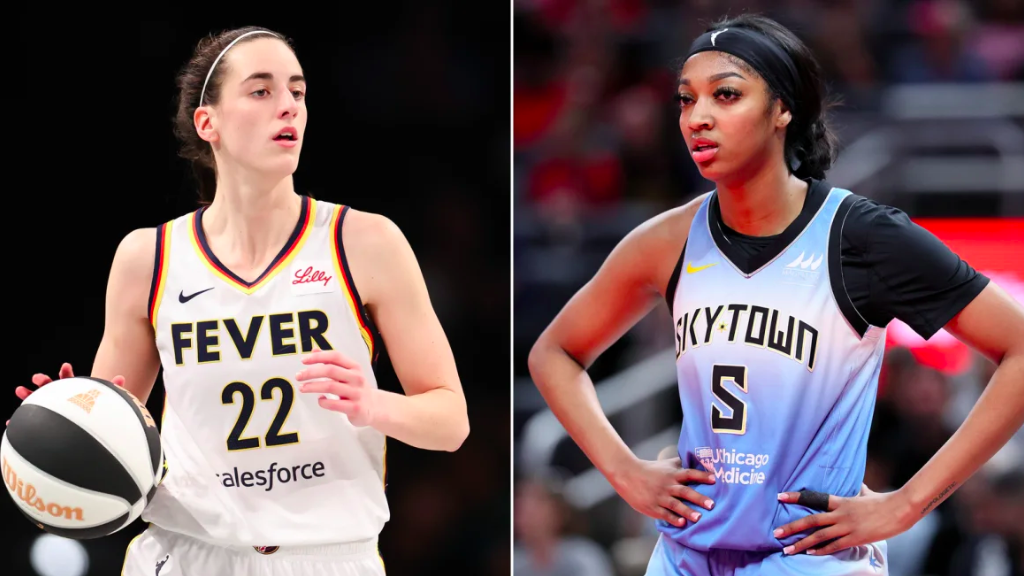
Clark and Reese Make WNBA All-Star Team in Debut Season
The WNBA has long been a platform showcasing the incredible talent and athleticism of women basketball players. This year, the league has seen an infusion of young talent, with rookies Caitlin Clark and Angel Reese making significant waves.
Their remarkable performances have earned them spots on the prestigious WNBA All-Star team, a testament to their skills, dedication, and impact on the game. This article delves into the journey of these two phenomenal athletes, their achievements, and what their inclusion in the All-Star team means for the future of women’s basketball.
The Journey of Caitlin Clark
Early Life and Background
Caitlin Clark’s journey to becoming an All-Star began in West Des Moines, Iowa. From a young age, Clark exhibited a natural talent for basketball, which was nurtured by her supportive family and dedicated coaches.
High School Achievements
Clark attended Dowling Catholic High School, where she quickly became a standout player. Her scoring ability and court vision set her apart, leading her team to numerous victories and earning her national recognition. She was named a McDonald’s All-American, solidifying her status as one of the top high school players in the country.
College Dominance at Iowa
Clark chose to play college basketball at the University of Iowa, where she continued to impress. Her freshman year was nothing short of spectacular, as she led the nation in scoring and earned numerous accolades, including Big Ten Freshman of the Year. Her dynamic playing style and ability to perform under pressure made her a must-watch player.
The Rise of Angel Reese
Early Beginnings
Angel Reese’s path to the WNBA began in Baltimore, Maryland. Like Clark, Reese showed early promise on the basketball court. Her competitive spirit and drive were evident from the start.
High School Success
Reese attended St. Frances Academy, where she became one of the most dominant players in high school basketball. She led her team to multiple championships and was named a McDonald’s All-American. Her versatility and tenacity on the court made her a top recruit for college programs across the country.
College Career at Maryland
Reese committed to the University of Maryland, where she continued to excel. Her impact was immediate, as she helped lead the Terrapins to numerous victories and earned several individual awards. Her defensive prowess and scoring ability made her a force to be reckoned with.
Making Their Mark in the WNBA
Transition to the Professional League
The transition from college to the professional league is challenging, but both Clark and Reese have made it look seamless. Their skills, work ethic, and competitive nature have allowed them to quickly adapt to the WNBA’s fast-paced environment.
Early Season Highlights
In their rookie seasons, both players have had numerous standout moments. Clark’s scoring ability and playmaking skills have made her a key player for her team, while Reese’s defensive prowess and versatility have been crucial for her squad.
Earning All-Star Honors
The WNBA All-Star selection is a significant achievement for any player, but earning it as a rookie is particularly impressive. For Clark and Reese, this honor is a testament to their hard work, talent, and the impact they’ve had on the league in such a short time.
The Impact of Their Achievements
Inspiring the Next Generation
Clark and Reese’s success is inspiring young athletes across the country. Their journeys highlight the importance of dedication, hard work, and believing in oneself. They serve as role models for aspiring basketball players, showing that dreams can be achieved with perseverance and passion.
Shaping the Future of the WNBA
Their inclusion in the All-Star team signifies a bright future for the WNBA. As the league continues to grow, the emergence of talented rookies like Clark and Reese ensures that the quality of play remains high and that fans will be treated to exciting basketball for years to come.
Conclusion
Caitlin Clark and Angel Reese’s selection to the WNBA All-Star team is a remarkable achievement that underscores their talent and hard work. Their journeys from high school standouts to college stars and now professional athletes serve as an inspiration to many. As they continue to make their mark in the WNBA, their influence on the game and the next generation of players will undoubtedly be significant.
Frequently Asked Questions (FAQs)
What makes Caitlin Clark and Angel Reese standout rookies in the WNBA?
Caitlin Clark and Angel Reese are standout rookies due to their exceptional skills, competitive nature, and significant impact on their teams. Clark’s scoring ability and playmaking skills, combined with Reese’s defensive prowess and versatility, set them apart in the league.
How did Caitlin Clark’s college career prepare her for the WNBA?
Caitlin Clark’s college career at the University of Iowa prepared her for the WNBA by allowing her to compete at a high level and develop her skills. Leading the nation in scoring and earning multiple accolades gave her the confidence and experience needed to excel in the professional league.
What are some of Angel Reese’s notable achievements in her rookie season?
In her rookie season, Angel Reese has been a key defensive player for her team and has shown versatility on the court. Her ability to guard multiple positions and contribute to her team’s success has been widely recognized, earning her All-Star honors.
How do Caitlin Clark and Angel Reese inspire young athletes?
Caitlin Clark and Angel Reese inspire young athletes by demonstrating that hard work, dedication, and passion can lead to success. Their journeys highlight the importance of perseverance and believing in oneself, serving as role models for aspiring basketball players.
What is the significance of their All-Star selection for the future of the WNBA?
Their All-Star selection signifies a bright future for the WNBA, as it showcases the emergence of talented young players who will continue to elevate the league. Clark and Reese’s success ensures that the quality of play remains high and that fans can look forward to exciting basketball for years to come.
References: CNN Article
Basketball
Angel Reese Goes Viral After Posting Picture With Caitlin Clark
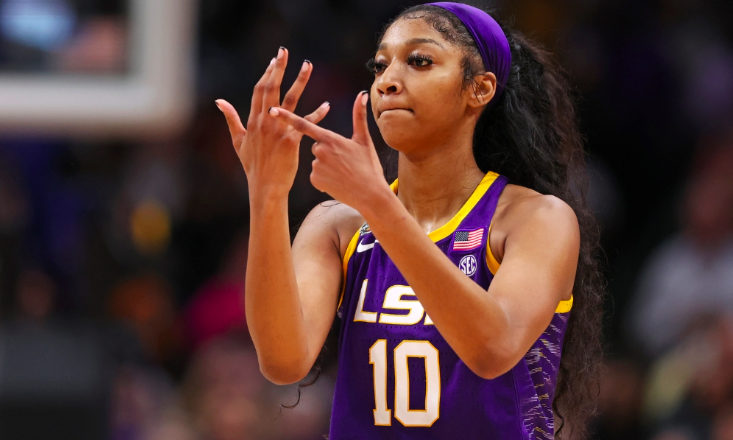
Angel Reese Goes VIRAL After Posting Picture With Caitlin Clark
In the world of sports, viral moments often emerge unexpectedly, capturing the attention of fans and media alike. One such moment recently involved Angel Reese and Caitlin Clark, two standout athletes whose recent photo together sparked a wave of excitement across social media. In this article, we delve into the details behind this viral sensation, exploring the impact of their friendship and the significance of their careers.
The Rise of Angel Reese
Early Life and Background
Angel Reese’s journey to stardom began in Baltimore, Maryland, where she was born and raised. Her passion for basketball was evident from a young age, and she quickly became a standout player in high school.
High School Achievements
During her high school career, Reese played for St. Frances Academy, where she led her team to multiple championships. Her impressive stats and leadership on the court earned her numerous accolades, including being named a McDonald’s All-American.
College Career at Maryland
Reese’s talent caught the attention of top college programs, and she eventually committed to the University of Maryland. At Maryland, she continued to excel, becoming a key player for the Terrapins. Her performance on the court and her charismatic personality off it made her a fan favorite.
Caitlin Clark: A Star in Her Own Right

Early Beginnings
Caitlin Clark’s rise to fame began in West Des Moines, Iowa. Like Reese, she showed a natural talent for basketball early on, and her skills were honed through years of dedication and hard work.
High School Stardom
Clark attended Dowling Catholic High School, where she established herself as one of the top players in the nation. Her scoring ability and court vision set her apart, earning her numerous awards and recognition.
Dominance at Iowa
Clark chose to play college basketball at the University of Iowa, where she quickly became one of the most exciting players in the NCAA. Her ability to score from anywhere on the court and her competitive spirit made her a standout player and a household name.
The Viral Moment
The Picture That Broke the Internet
The viral moment in question occurred when Angel Reese posted a picture of herself with Caitlin Clark on social media. The photo, which showed the two athletes smiling and posing together, quickly gained traction and went viral.
Social Media Reactions
Fans and fellow athletes were quick to react to the photo. Comments and shares flooded in, with many praising the friendship between the two players and expressing excitement about their future careers.
Media Coverage
The media also took notice, with sports outlets and news organizations covering the story. Articles and segments highlighted the significance of the photo, emphasizing the impact of their friendship on the sports community.
The Significance of Their Friendship
Bridging Rivalries
One of the reasons the photo went viral was the perceived rivalry between Reese and Clark. Both players are known for their competitive nature, and their teams have faced off in intense matchups. The photo served as a reminder that, despite on-court rivalries, athletes can share mutual respect and camaraderie.
Empowering Female Athletes
The photo also resonated because it showcased two successful female athletes supporting each other. In a sports world often dominated by male narratives, the friendship between Reese and Clark highlighted the importance of female athletes uplifting one another.
The Impact on Their Careers
Increased Popularity
The viral photo brought even more attention to Reese and Clark, boosting their popularity and expanding their fan bases. Both players saw increases in their social media followings and received endorsements and sponsorships as a result.
Future Collaborations
There is speculation that the friendship between Reese and Clark could lead to future collaborations, both on and off the court. Fans are excited about the potential for joint ventures, such as charity events or training camps.
Conclusion
The viral photo of Angel Reese and Caitlin Clark is a testament to the power of sports to bring people together. It highlights the importance of friendship and mutual respect among athletes, even in the face of intense competition. As both players continue to excel in their careers, their friendship will undoubtedly inspire fans and fellow athletes alike.
Frequently Asked Questions (FAQs)
How did Angel Reese and Caitlin Clark become friends?
Angel Reese and Caitlin Clark became friends through their mutual respect for each other’s skills and competitive spirit. Their paths crossed frequently in the basketball world, leading to a strong bond.
What impact did the viral photo have on their careers?
The viral photo significantly boosted their popularity, leading to increased social media followings, endorsements, and media coverage. It also highlighted their influence as female athletes.
Will Reese and Clark collaborate on any projects in the future?
While there is no official confirmation, there is speculation that their friendship could lead to future collaborations, such as charity events, training camps, or joint ventures.
How did fans react to the viral photo?
Fans reacted positively to the viral photo, praising the friendship between Reese and Clark. The photo received thousands of likes, comments, and shares, with many expressing excitement about their future careers.
What message does the friendship between Reese and Clark send to other athletes?
The friendship between Reese and Clark sends a message of camaraderie and mutual respect. It shows that athletes can support each other and build strong bonds, even in the face of intense competition.
Basketball
Unusual Personalities of Basketball Stars: Off-Court Eccentricities
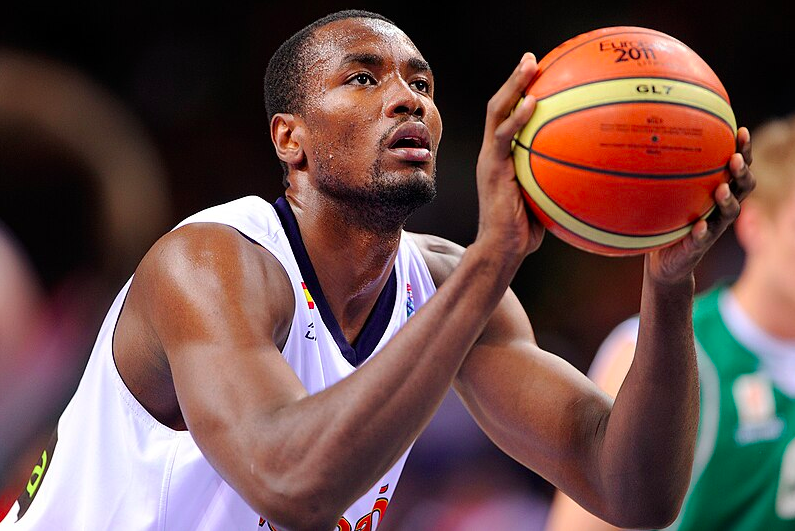
Unusual Personalities of Basketball Stars: Off-Court Eccentricities
Basketball stars are known for their extraordinary skills on the court, but what about their lives off the court? Some players have fascinating and unusual personalities that set them apart from the crowd. In this article, we’ll explore the off-court eccentricities of some of the most famous basketball stars.
1). The Introverted Genius: Kawhi Leonard
Kawhi Leonard, known for his quiet demeanor, is one of the NBA’s most enigmatic personalities. Off the court, he keeps a low profile, preferring to let his game do the talking. Despite his reserved nature, Leonard has a quirky side, often displaying a dry sense of humor in interviews and social media posts.

The Introverted Genius: Kawhi Leonard
Kawhi Leonard is not your typical NBA star. Despite his quiet demeanor off the court, he possesses a basketball IQ and skill set that are second to none. Here’s a closer look at the introverted genius:
1. Quiet Confidence: Leonard is known for his reserved nature, often letting his game do the talking. He doesn’t seek the spotlight but instead focuses on perfecting his craft and helping his team win.
2. Defensive Dominance: Leonard’s defensive prowess is legendary. His ability to lock down the opposing team’s best player has earned him multiple Defensive Player of the Year awards.
3. Offensive Versatility: While defense is his calling card, Leonard is also a potent offensive threat. His scoring ability, especially in clutch moments, has earned him the nickname “The Klaw.”
4. Basketball IQ: Leonard’s understanding of the game is exceptional. He reads plays well, anticipates opponents’ moves, and makes high basketball IQ decisions on the court.
5. Work Ethic: Despite his natural talent, Leonard is known for his relentless work ethic. He puts in the hours in the gym, constantly working to improve his game and add new elements to his skill set.
6. Humble Demeanor: Despite his many accomplishments, Leonard remains humble and grounded. He shies away from the spotlight and lets his game speak for itself.
7. Team Player: Leonard is not just a solo act. He values teamwork and is known for his unselfish play, often making the extra pass to set up his teammates for success.
8. Clutch Performer: When the game is on the line, Leonard is at his best. His ability to deliver in crunch time has led to some memorable moments and clutch shots throughout his career.
9. Leadership by Example: While not a vocal leader, Leonard leads by example. His work ethic, dedication, and performance on the court set the standard for his teammates.
10. Legacy: Leonard’s impact on the game goes beyond his individual accolades. He has inspired a new generation of players with his quiet excellence and has left a lasting legacy in the NBA.
2). The Fashion Icon: Russell Westbrook
Russell Westbrook is not only known for his dynamic playing style but also for his bold fashion choices. Off the court, Westbrook is a trendsetter, often seen sporting avant-garde outfits that turn heads. His unique sense of style has earned him a reputation as one of the NBA’s most stylish players.
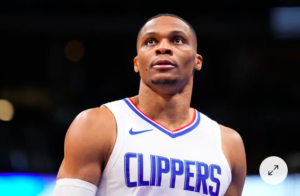
The Fashion Icon: Russell Westbrook
Russell Westbrook is not only a star on the basketball court but also a fashion icon off it. His bold and daring fashion choices have garnered as much attention as his electrifying play. Here’s a closer look at Westbrook’s unique sense of style:
1. Bold Statements: Westbrook is known for pushing the boundaries of fashion with his bold and daring outfits. Whether it’s bright colors, bold patterns, or unique accessories, he always makes a statement.
2. Trendsetter: Westbrook is not afraid to take risks with his fashion. He often sets trends and pushes the envelope with his innovative and cutting-edge looks.
3. Versatility: Westbrook’s fashion sense is versatile, ranging from sleek and sophisticated suits to casual and edgy streetwear. He can effortlessly switch between different styles, always staying true to his unique aesthetic.
4. Attention to Detail: One of Westbrook’s trademarks is his attention to detail. He pays meticulous attention to every aspect of his outfit, from the accessories to the shoes, ensuring that every element complements the overall look.
5. Confidence: Perhaps the most important aspect of Westbrook’s fashion sense is his confidence. He wears each outfit with swagger and poise, owning the look and making it his own.
6. Influence: Westbrook’s influence extends beyond the basketball court. He has become a fashion icon, inspiring others to embrace their own sense of style and take risks with their fashion choices.
7. Collaboration: Westbrook has collaborated with several fashion brands and designers, creating his own lines of clothing and accessories. His collaborations often reflect his bold and innovative style.
8. Impact: Westbrook’s impact on the fashion world has been significant. He has challenged traditional notions of style and beauty, inspiring a new generation of fashion enthusiasts to think outside the box.
9. Expression: For Westbrook, fashion is a form of self-expression. He uses his clothing choices to express his personality, creativity, and individuality, showing that fashion can be fun, fearless, and empowering.
10. Legacy: Westbrook’s influence on fashion is undeniable. He has redefined what it means to be a fashion icon, showing that style is not just about what you wear but how you wear it.
3). The Philosopher: Kyrie Irving
Kyrie Irving is not your typical basketball star. Off the court, Irving is known for his intellectual curiosity and philosophical musings. He has expressed unconventional views on topics ranging from science to spirituality, often sparking controversy and debate among fans and media.
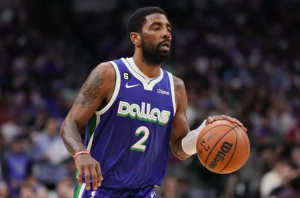
The Philosopher: Kyrie Irving
Kyrie Irving is not just a basketball player; he’s also known for his philosophical outlook on life. Here’s a deeper look into the mind of this NBA star:
1. Intellectual Curiosity: Irving is known for his intellectual curiosity and interest in exploring complex ideas. He’s often seen pondering deep questions about the nature of reality, consciousness, and the universe.
2. Flat Earth Theory: One of Irving’s most famous philosophical musings was his assertion that the Earth is flat. While he later clarified that his comments were more about encouraging people to question accepted truths, it sparked a debate about science, skepticism, and the nature of belief.
3. Seeking Truth: Irving has spoken about the importance of seeking truth and questioning conventional wisdom. He believes in the power of individual thought and encourages others to think critically about the world around them.
4. Personal Growth: Irving sees life as a journey of personal growth and self-discovery. He’s open about his own struggles and challenges, viewing them as opportunities for learning and development.
5. Spirituality: Irving’s philosophical outlook is often intertwined with his spirituality. He’s spoken about the connection between mind, body, and spirit, and how it influences his approach to basketball and life.
6. Mindfulness: Irving practices mindfulness and meditation, which he believes helps him stay focused and grounded. He sees these practices as essential for maintaining mental clarity and emotional balance.
7. Philanthropy: Irving’s philosophical beliefs extend to his philanthropic efforts. He’s involved in various charitable initiatives aimed at promoting education, equality, and social justice, reflecting his desire to make a positive impact on the world.
8. Embracing Uncertainty: Irving embraces the uncertainty of life, viewing it as an opportunity for growth and exploration. He encourages others to embrace change and see challenges as opportunities for learning and adaptation.
9. Influence on Others: Irving’s philosophical musings have influenced others to think more deeply about their own beliefs and assumptions. He’s sparked conversations about the nature of reality and our place in the universe, challenging people to think beyond the conventional.
10. Legacy: Ultimately, Irving hopes to leave a legacy of thoughtful inquiry and intellectual curiosity. He wants to inspire others to question the world around them and seek their own truths, much like he has throughout his career.
4). The Renaissance Man: LeBron James
LeBron James is more than just a basketball player—he’s a businessman, philanthropist, and activist. Off the court, James is involved in a variety of endeavors, from producing films to opening a school for at-risk youth. His diverse interests and achievements make him one of the NBA’s most multifaceted personalities.

The Renaissance Man: LeBron James
LeBron James is not just a basketball player; he’s a modern-day Renaissance man. Here’s a deeper look into the many facets of this NBA icon:
1. Basketball Savant: LeBron’s basketball skills are legendary. With multiple MVP awards and NBA championships, he’s widely regarded as one of the greatest basketball players of all time.
2. Philanthropist: Off the court, LeBron is a dedicated philanthropist. Through his LeBron James Family Foundation, he has helped thousands of at-risk children in his hometown of Akron, Ohio, by providing educational support and resources.
3. Business Mogul: LeBron is also a successful businessman. He has endorsement deals with major brands like Nike and Coca-Cola, and he owns his own production company, SpringHill Entertainment, which produces films, TV shows, and documentaries.
4. Social Activist: LeBron is outspoken on social issues. He has used his platform to speak out against racial injustice and has been a vocal advocate for social change.
5. Family Man: Despite his busy schedule, LeBron prioritizes his family. He’s a devoted husband to his wife, Savannah, and a loving father to his three children.
6. Fashion Icon: LeBron is known for his impeccable sense of style. Whether he’s on the court or on the red carpet, he always looks sharp and fashionable.
7. Mentor and Leader: LeBron is a mentor to many young players in the NBA. His leadership both on and off the court has inspired a new generation of athletes to strive for greatness.
8. Cultural Influencer: LeBron’s impact extends beyond the world of sports. He’s a cultural icon whose influence can be seen in fashion, entertainment, and even politics.
9. Role Model: LeBron is a role model to millions of people around the world. His dedication to his craft, his commitment to his community, and his unwavering values make him an inspiration to many.
10. Legacy: LeBron’s legacy is still being written, but one thing is certain: he will be remembered as more than just a basketball player. He will be remembered as a true Renaissance man, whose impact transcended sports and touched the lives of people around the world.
5). The Free Spirit: JaVale McGee
JaVale McGee is known for his playful personality and offbeat sense of humor. Off the court, McGee is a free spirit, often engaging in quirky antics and pranks. His lighthearted approach to life makes him a fan favorite and adds a touch of fun to the NBA.
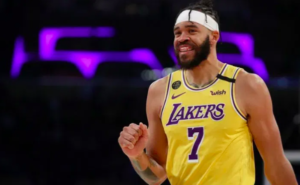
The Free Spirit: JaVale McGee
JaVale McGee is not your typical NBA player. Known for his eclectic personality and offbeat interests, McGee marches to the beat of his own drum both on and off the court. Here’s a glimpse into the life of this free spirit:
1. Quirky Hobbies: McGee is known for his love of unconventional hobbies. From his passion for knitting to his interest in ancient history, he embraces activities that set him apart from his peers.
2. Philanthropy: Despite his whimsical nature, McGee is deeply committed to making a difference in the world. He is actively involved in various charitable causes, using his platform to raise awareness and support for those in need.
3. Sense of Humor: McGee’s lighthearted and humorous nature is evident both on and off the court. He often engages with fans on social media, sharing comedic moments and showing off his playful side.
4. Fashion Forward: McGee is no stranger to bold fashion choices. He is known for his eclectic sense of style, often mixing and matching patterns and colors to create eye-catching outfits.
5. Family Man: Despite his busy schedule, McGee prioritizes his family. He is a devoted father and often shares glimpses of his family life on social media, showing his fans a different side of his personality.
6. Intellectual Curiosity: McGee is known for his intellectual curiosity. He is constantly seeking out new knowledge and experiences, whether it’s through reading, traveling, or engaging in meaningful conversations.
7. Unconventional Playstyle: On the court, McGee’s playstyle is as unique as his personality. Known for his shot-blocking abilities and high-flying dunks, he brings a sense of excitement and unpredictability to the game.
8. Embracing Individuality: Through his actions and lifestyle choices, McGee encourages others to embrace their individuality. He is a strong advocate for self-expression and staying true to oneself, no matter how unconventional it may seem.
9. Positive Influence: Despite his unconventional approach to life, McGee is a positive influence on those around him. His infectious personality and upbeat attitude have earned him respect and admiration from fans, teammates, and coaches alike.
10. Legacy: McGee’s legacy extends far beyond the basketball court. He has shown that it’s okay to be different, to march to the beat of your own drum, and to embrace the things that make you unique.
6). The Gentle Giant: Boban Marjanovic
Boban Marjanovic, standing at 7’4″, is not only known for his towering height but also for his gentle and lovable personality. Off the court, Marjanovic is known for his warm demeanor and infectious smile. He often delights fans with his humorous antics and playful interactions on social media.
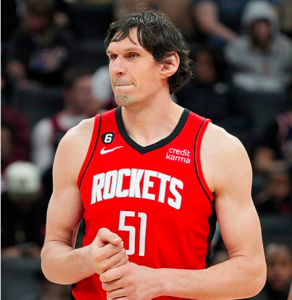
The Gentle Giant: Boban Marjanovic
Boban Marjanovic is more than just a towering presence on the basketball court; he’s also known for his gentle nature and quirky personality. Standing at 7 feet 4 inches tall, Marjanovic is one of the tallest players in NBA history. Here’s a closer look at the life of this gentle giant:
1. Larger Than Life: Marjanovic’s height is often the first thing people notice about him. His towering stature makes him a formidable presence on the court, and he uses his size to his advantage, particularly in rebounding and shot-blocking.
2. Soft-Spoken: Despite his intimidating size, Marjanovic is known for his soft-spoken and gentle demeanor. He is often seen smiling and engaging with fans, teammates, and opponents alike in a friendly manner.
3. Humble Beginnings: Marjanovic’s journey to the NBA was anything but easy. He grew up in Serbia during the Yugoslav Wars and faced many challenges on his path to basketball stardom. His humble beginnings have shaped him into the down-to-earth person he is today.
4. Multilingual: Marjanovic is fluent in several languages, including Serbian, English, and Russian. His ability to communicate with people from different backgrounds has helped him connect with fans and teammates around the world.
5. Sense of Humor: Despite his gentle nature, Marjanovic has a playful side. He is known for his sense of humor and has appeared in several humorous commercials and videos, showcasing his fun-loving personality.
6. Acting Career: Marjanovic has also dabbled in acting, appearing in a few films and TV shows. His larger-than-life presence makes him a natural on-screen, and he has earned praise for his performances.
7. Family Man: Off the court, Marjanovic is a devoted husband and father. He often shares photos and videos of his family on social media, showing his fans a glimpse into his personal life.
8. Fan Favorite: Marjanovic’s gentle giant persona has made him a fan favorite wherever he goes. His fans appreciate not only his skills on the court but also his kindness and humility off the court.
9. Team Player: Despite his individual talents, Marjanovic is known for his team-first mentality. He is always willing to do whatever it takes to help his team succeed, whether it’s scoring points, grabbing rebounds, or setting screens.
10. Legacy: Marjanovic’s legacy extends far beyond basketball. He is not only remembered for his skills on the court but also for his kind heart and gentle nature. He has shown that true strength comes from kindness and humility, making him a role model for aspiring athletes everywhere.
7). The Artistic Soul: Chris Bosh
Chris Bosh is not just a basketball player—he’s also an avid art enthusiast. Off the court, Bosh channels his creativity into various artistic pursuits, including painting and photography. His unique perspective and artistic talents make him a standout among NBA players.
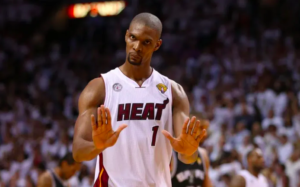
The Artistic Soul: Chris Bosh
Chris Bosh is renowned for his creativity both on and off the basketball court. Beyond his impressive basketball career, Bosh is also known for his artistic talents and unique approach to life. Here’s a closer look at the artistic soul of Chris Bosh:
1. Creative Expression: Bosh’s creativity extends beyond basketball. He is an accomplished musician, writer, and visual artist, using various forms of expression to showcase his artistic talents.
2. Musician: Bosh is a skilled musician and has a passion for playing the guitar. He often shares videos of himself playing music on social media, giving fans a glimpse into his musical talents.
3. Writer: Bosh is also a talented writer and has authored several books. He uses his writing to share his insights and experiences, offering readers a unique perspective on life and basketball.
4. Visual Artist: Bosh’s artistic talents are not limited to music and writing; he is also a talented visual artist. He creates stunning pieces of art that reflect his creativity and unique vision.
5. Philanthropy: Bosh is deeply committed to giving back to the community and uses his platform to support various charitable causes. His philanthropic efforts have made a positive impact on the lives of many people.
6. Fashion Icon: Bosh is known for his impeccable sense of style and is considered a fashion icon both on and off the court. He often pushes the boundaries of fashion, setting trends and inspiring others with his unique style.
7. Basketball Career: Despite his artistic pursuits, Bosh’s basketball career is equally impressive. He is a two-time NBA champion and an 11-time NBA All-Star, showcasing his exceptional talent and dedication to the game.
8. Inspiration: Bosh’s artistic soul serves as an inspiration to many. He shows that it’s possible to excel in multiple areas of life and encourages others to pursue their passions and express themselves creatively.
9. Legacy: Bosh’s legacy goes beyond his accomplishments on the basketball court. He is remembered for his creativity, generosity, and unique approach to life, leaving a lasting impact on the world around him.
10. Role Model: Bosh serves as a role model for aspiring artists and athletes alike. His ability to balance his athletic career with his artistic pursuits is a testament to his dedication, passion, and talent.
8). The Music Maestro: Damian Lillard
Damian Lillard, also known as Dame D.O.L.L.A, is not just a basketball star—he’s also a talented rapper. Off the court, Lillard pursues his passion for music, releasing several albums to critical acclaim. His lyrical prowess and musical talents showcase his multifaceted personality.

The Music Maestro: Damian Lillard
Damian Lillard, also known by his rap alias Dame D.O.L.L.A., is not just a basketball superstar but also a talented musician. Here’s a glimpse into the musical world of Damian Lillard:
1. Dual Talents: Damian Lillard is a rare talent who excels in both basketball and music. He has released several rap albums and singles, showcasing his skills as a lyricist and performer.
2. Passion for Music: Lillard’s love for music is evident in his dedication to his craft. Despite his demanding basketball career, he finds time to write, record, and release music that resonates with fans around the world.
3. Authenticity in Lyrics: Lillard’s lyrics often reflect his personal experiences and struggles, making his music relatable and heartfelt. He uses his platform to address social issues and inspire others through his music.
4. Music Career Highlights: Lillard’s music career has seen several highlights, including collaborations with renowned artists such as Lil Wayne and 2 Chainz. His albums have received critical acclaim and have been well-received by fans.
5. Influence in the Music Industry: Lillard’s impact extends beyond the basketball court, as he is considered a significant figure in the music industry. His music has garnered millions of streams, and he continues to grow his fan base with each release.
6. Balancing Act: Balancing a successful basketball career with a thriving music career is no easy feat, but Lillard manages to do so with grace and skill. His ability to excel in both fields is a testament to his talent and work ethic.
7. Inspiration to Others: Lillard’s journey serves as an inspiration to aspiring musicians and athletes alike. He shows that with dedication, passion, and hard work, it is possible to pursue multiple passions and excel in them.
8. Legacy: Lillard’s legacy will not only be defined by his achievements on the basketball court but also by his contributions to the music industry. He has carved out a unique path for himself and has left a lasting impact on both worlds.
9. Community Engagement: Lillard uses his music as a platform to engage with his community and address issues that are important to him. He is actively involved in philanthropic efforts and uses his influence for positive change.
10. Overall Impact: Damian Lillard’s impact as a musician goes beyond his individual success. He has brought a new level of artistry and authenticity to the music industry, solidifying his place as a true music maestro.
9). The Comedy King: Blake Griffin
Blake Griffin is not only known for his basketball skills but also for his comedic talents. Off the court, Griffin has ventured into stand-up comedy, showcasing his wit and humor. His comedic chops have earned him a following both on and off the court.
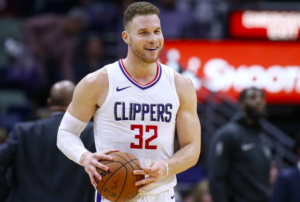
The Comedy King: Blake Griffin
Blake Griffin is not only a dominant force on the basketball court but also a comedic genius off the court. Here’s a closer look at the lighter side of this NBA star:
1. Stand-Up Comedian: Blake is known for his stand-up comedy skills, often performing at comedy clubs in Los Angeles. His sharp wit and comedic timing have earned him praise from both fans and fellow comedians.
2. Comedy Specials: In 2016, Blake starred in his own comedy special, “Blake Griffin’s Gamebreakers.” The special received critical acclaim for its hilarious sketches and skits.
3. Acting Career: Blake has also dabbled in acting, appearing in several TV shows and movies. His comedic chops have landed him roles in comedies like “The Female Brain” and “The Last O.G.”
4. Comedy Sketches: Blake is known for his hilarious comedy sketches, often collaborating with other comedians and actors. His videos have gone viral, showcasing his comedic talents to a wider audience.
5. NBA Roasts: Blake is no stranger to roasting his fellow NBA players. His quick wit and playful banter have made him a fan favorite at NBA events and on social media.
6. Charity Comedy Events: Blake often participates in charity comedy events, using his comedic talents to raise money for various causes. His generosity and humor make him a beloved figure both on and off the court.
7. Comedy Influencer: Blake’s comedic influence extends beyond the basketball court. He has inspired a new generation of athletes to embrace their comedic side and use humor to connect with fans.
8. Social Media Presence: Blake’s social media accounts are filled with comedic content, including funny videos, memes, and jokes. His lighthearted approach to social media has endeared him to fans around the world.
9. Humorous Personality: Above all, Blake is known for his infectious personality and sense of humor. Whether he’s cracking jokes in interviews or making light of a tough situation, his comedic charm never fails to bring a smile to people’s faces.
10. Legacy: Blake’s legacy as the Comedy King of the NBA is cemented in his ability to bring laughter and joy to fans everywhere. His unique blend of athleticism and humor has made him a true icon of the game.
10). The Nature Lover: Serge Ibaka
Serge Ibaka is known for his love of nature and wildlife. Off the court, Ibaka is an avid outdoorsman, often embarking on adventures in the wilderness. His passion for nature is reflected in his efforts to raise awareness about environmental issues.
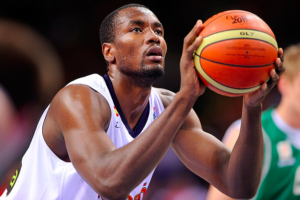
The Nature Lover: Serge Ibaka
Serge Ibaka, known for his prowess on the basketball court, is also a passionate nature lover. Here’s a closer look at his deep connection with the natural world:
1. African Roots: Serge Ibaka was born in the Republic of the Congo, where he developed a profound appreciation for the beauty and diversity of the African landscape. His upbringing instilled in him a deep respect for nature and wildlife.
2. Conservation Efforts: Ibaka is actively involved in conservation efforts, particularly in Africa. He has been a vocal advocate for protecting endangered species and preserving natural habitats. He uses his platform to raise awareness about environmental issues.
3. Safari Enthusiast: Ibaka is known to enjoy safaris and has shared his experiences exploring the African wilderness on social media. His love for wildlife and adventure is evident in the photos and videos he shares from his trips.
4. Environmental Activism: Ibaka’s passion for nature extends to his everyday life. He promotes sustainable living practices and advocates for eco-friendly initiatives. He is committed to reducing his carbon footprint and encourages others to do the same.
5. Wildlife Photography: Ibaka has a keen interest in wildlife photography and often captures stunning images of animals in their natural habitats. His photos showcase the beauty of the natural world and highlight the importance of conservation.
6. Nature Retreats: Despite his busy basketball schedule, Ibaka makes time to retreat into nature. He finds solace and inspiration in the outdoors, often sharing moments of tranquility and reflection with his followers.
7. Nature Conservation Projects: Ibaka is involved in various nature conservation projects, including tree planting initiatives and wildlife protection programs. He believes in the importance of taking action to preserve the environment for future generations.
8. Educating Others: Ibaka uses his platform to educate others about the importance of nature conservation. He believes that by raising awareness and inspiring others to take action, we can make a positive impact on the planet.
9. Personal Connection: For Ibaka, nature is more than just a hobby; it’s a way of life. He feels a deep personal connection to the natural world and is committed to doing his part to protect it.
10. Inspiring Others: Ibaka’s love for nature is inspiring. He shows that no matter where you come from or what you do, anyone can make a difference in the fight to preserve our planet’s natural beauty.
Conclusion
In conclusion, the off-court eccentricities of basketball stars add depth and intrigue to their personalities. Whether they’re gentle giants, artistic souls, music maestros, nature lovers, or comedy kings, these players show that there’s more to them than just basketball. Their unique traits and passions make them fascinating individuals both on and off the court.
Furthermore, basketball stars are not just athletes; they are complex individuals with unique personalities and interests. From the introverted genius of Kawhi Leonard to the comedic genius of Blake Griffin, these players show that there is more to them than meets the eye. Their off-court lives reveal a diverse range of talents and passions, from art and music to comedy and philanthropy.
By exploring the personal lives of these players, we gain a deeper appreciation for their contributions both on and off the court. Whether they are dominating the game or making us laugh, these basketball stars continue to inspire and entertain us with their remarkable talents and personalities.
Frequently Asked Questions (FAQs)
What is Boban Marjanovic known for off the court?
Boban Marjanovic is known for his gentle and lovable personality off the court.
Besides basketball, what artistic pursuits does Chris Bosh pursue?
Chris Bosh pursues various artistic pursuits, including painting and photography.
What is Damian Lillard known for besides basketball?
Damian Lillard is known for his music career under the name Dame D.O.L.L.A.
What is Serge Ibaka passionate about off the court?
Serge Ibaka is passionate about nature and wildlife off the court.
Besides basketball, what other talent does Blake Griffin have?
Blake Griffin has ventured into stand-up comedy off the court.
Which basketball star is known for his quiet demeanor?
Kawhi Leonard is known for his quiet demeanor off the court.
Who is considered a fashion icon among NBA players?
Russell Westbrook is considered a fashion icon for his bold fashion choices.
Which player is known for his intellectual curiosity and philosophical musings?
Kyrie Irving is known for his intellectual curiosity and philosophical musings off the court.
Apart from basketball, what other endeavors is LeBron James involved in?
LeBron James is involved in various endeavors, including producing films and opening a school for at-risk youth.
Who is known for his playful personality and offbeat sense of humor?
JaVale McGee is known for his playful personality and offbeat sense of humor off the court.
-
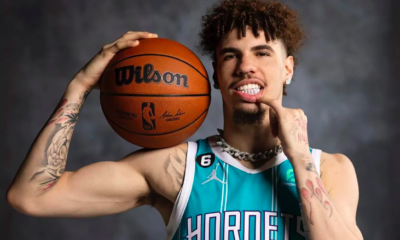
 NBA4 months ago
NBA4 months agoLaMelo Ball Net Worth: A Comprehensive Look at the NBA Star’s Financial Empire
-
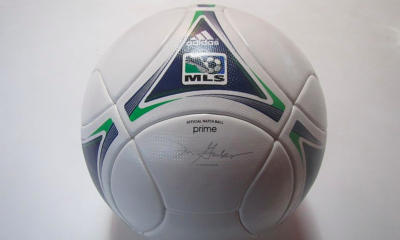
 Football6 months ago
Football6 months agoMeet the World Football Celebrities and Their Stories
-
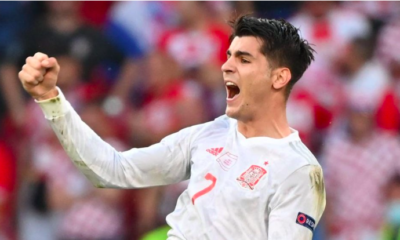
 Football5 months ago
Football5 months agoEuro 2024: Alvaro Morata Speaks Out About ‘No Respect’ in Spain
-
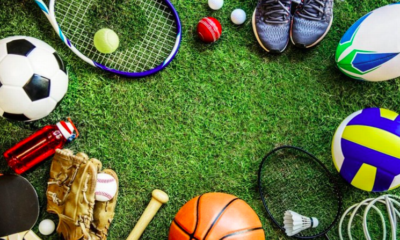
 Game5 months ago
Game5 months agoThe Ultimate Guide to General Multi-Sport Events
-
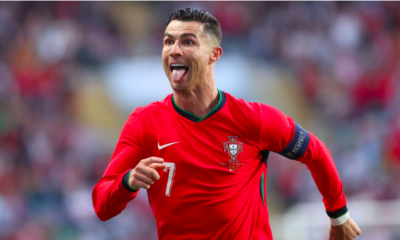
 Football5 months ago
Football5 months agoRonaldo’s Business Ventures and Investments (CR7 Brand)
-

 Football5 months ago
Football5 months agoEuro 2024 Power Rankings: Spain Remains Dominant Ahead of Semifinals
-
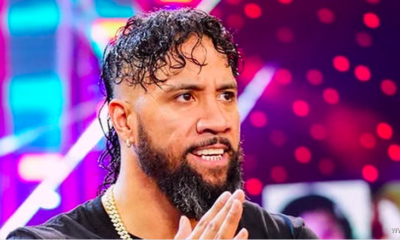
 Wrestling2 months ago
Wrestling2 months agoJey Uso Biography and Net Worth: The Rise of a WWE Superstar
-
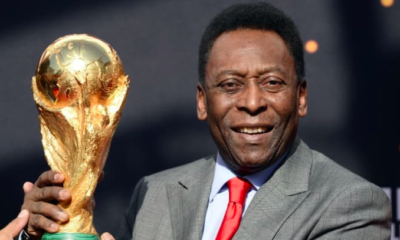
 Sports6 months ago
Sports6 months agoPele: The Legendary Journey of Football’s Greatest Icon | The Immortal King of Football



